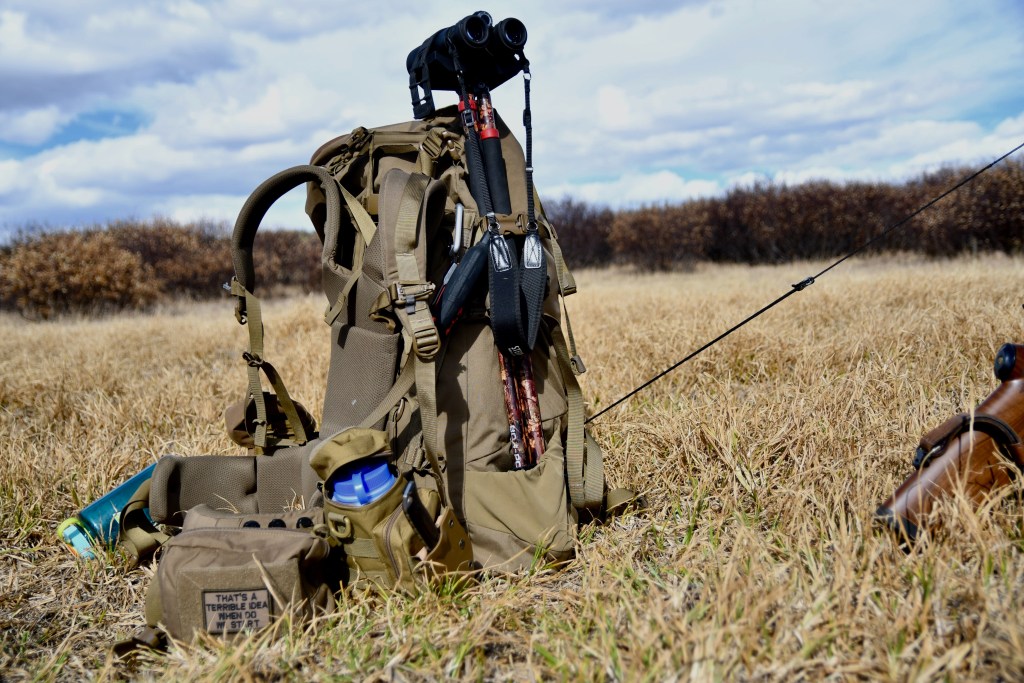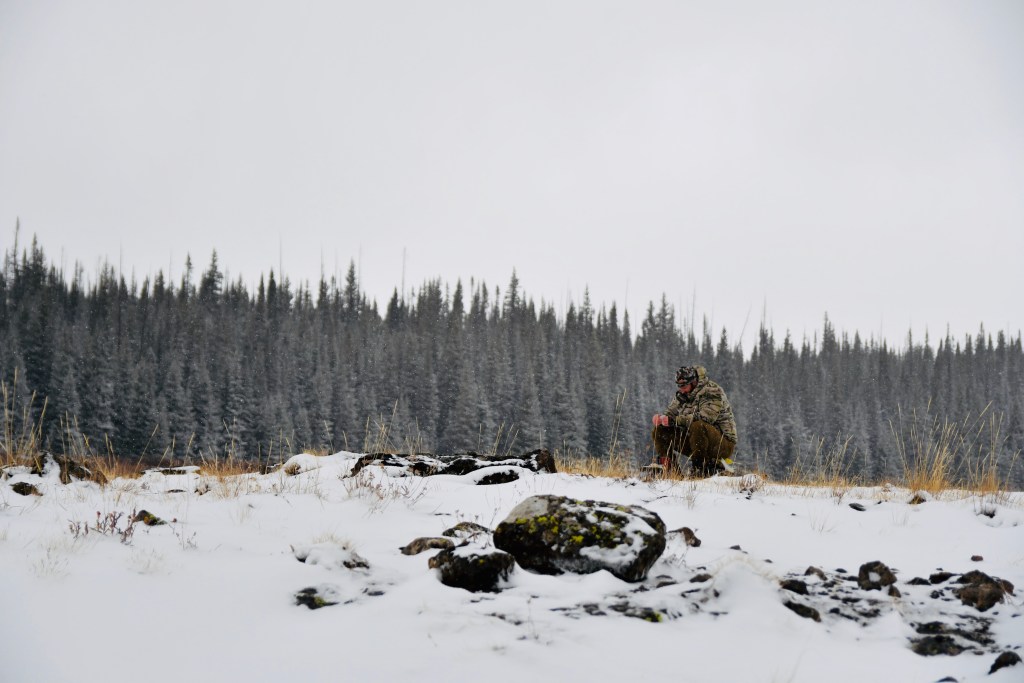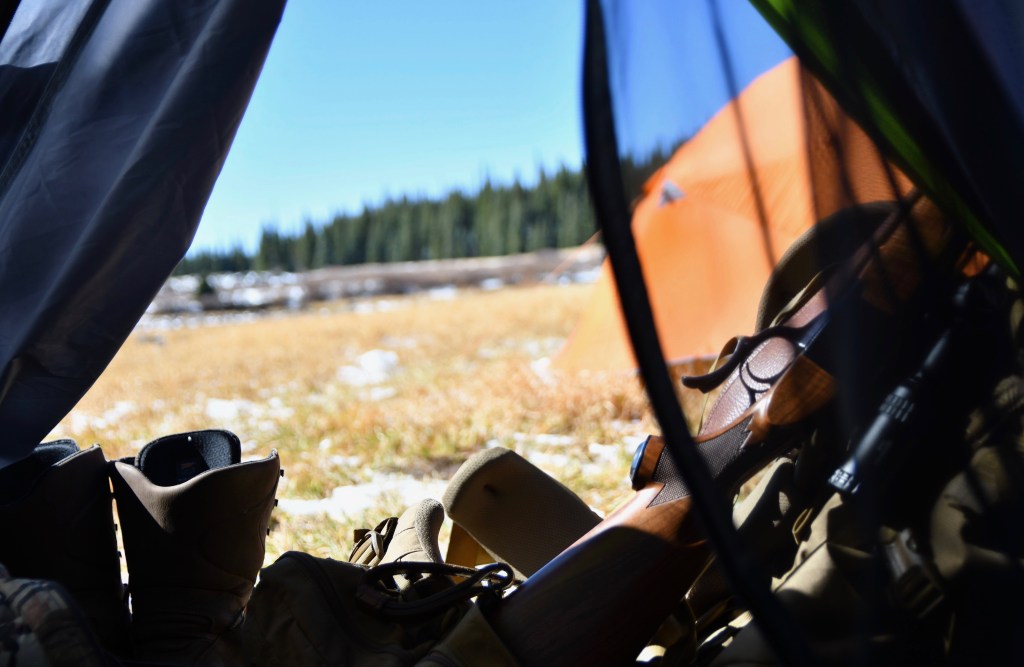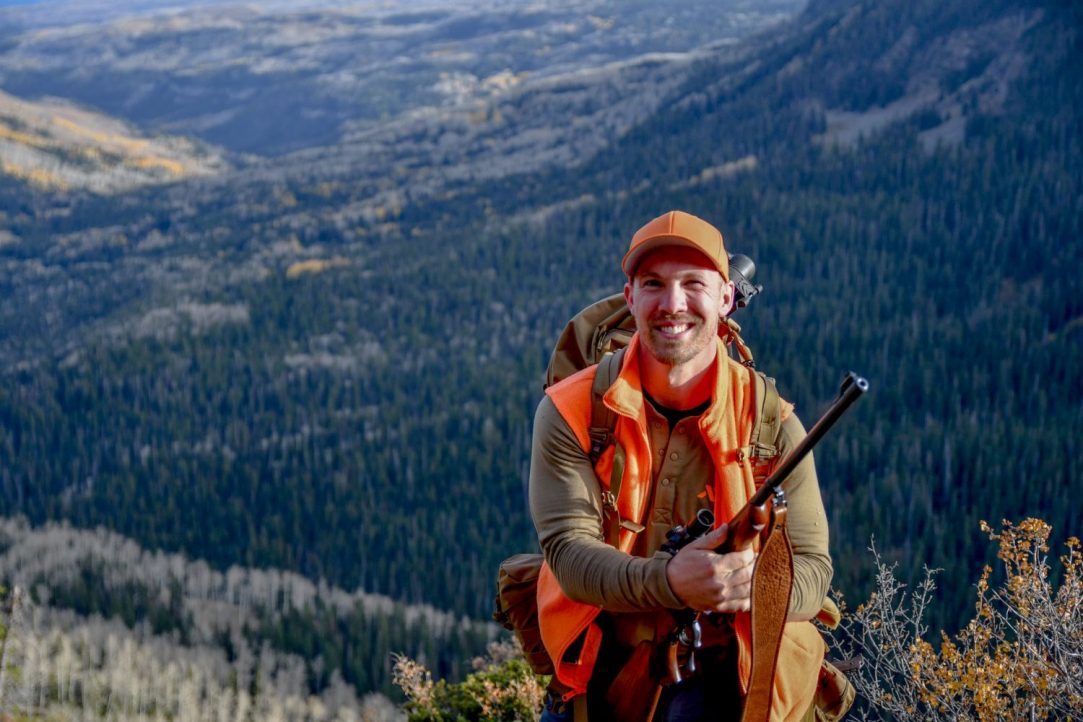I thought I’d trained and prepared enough for this hunt. I was very wrong. Like many outdoorsmen, I’ve long entertained aspirations of hunting big game—elk, bear, sheep—in the mountainous backcountry. I envisioned loading up my pack with a week’s worth of supplies, grabbing my rifle, and setting out into the depths of the wilds with few comforts or safeguards, only to emerge days later with my quarry strapped to my pack. This, it turns out, was a romantic vision of backcountry hunting that largely ignored its harsher reality, particularly that of hunting in high-elevation regions. The mountains can be among the most punishing hunting environments—and the most unpredictable—which I recently learned firsthand on my first elk/bear-hunting trip in northwest Colorado. Here are a few lessons I learned the hard way that may improve your dream backcountry hunt in the mountains.
Gear
It’s a cruel catch-22: You need more gear to ensure you’ll be prepared for any situation, but more equipment means more weight on your back, which can be debilitating on arduous climbs and hikes. You’ll need to strike a balance between having adequate gear and backups in case of equipment failure (we had several instances of crucial gear that didn’t hold up to the severe weather, and we were glad to have redundancies) and keeping the overall weight down. I went heavier than I should have on this trip—my pack weighed 80 pounds—and it made the five-mile ascent and descent to and from our campsite a hellish, almost Sisyphean challenge.

Elevation
Elevation changes everything. Oxygen levels at high elevations drop, as does the air pressure, which can cause altitude sickness in those who have ascended rapidly to an elevation of approximately 10,000 feet or more. Symptoms include headaches, dizziness, fatigue, loss of appetite (which is a killer when you need to be eating frequently to keep up with the dramatic increase in your caloric output), and shortness of breath (also a real detriment when you’re trying to hike long distances under load). It also plays hell with your sleep; even when you’re completely exhausted, you find yourself bobbing in and out of consciousness in an almost feverish state.
Your best bet is to take a few days before your hunt begins to acclimate to the elevation. If you’re uncertain about how badly this will affect you, or if, like me, you live near sea level and are almost certain to be impacted by it, consider getting a prescription from your doctor for the diuretic acetazolamide, which can mitigate symptoms. Avoid drinking alcohol prior to ascending, too, as it’ll only make the symptoms worse. If you do nothing, the symptoms will likely resolve on their own after a couple of days spent at the higher elevation. However, if the symptoms are severe—slurred speech, stumbling, confusion—this could be a sign of High Altitude Pulmonary Edema (HAPE) or High Altitude Cerebral Edema (HACE), which is the buildup of fluid in the lungs or in the brain. In those cases you should get to a lower elevation immediately and seek medical attention.
Weather
We have a saying here in Minnesota: If you don’t like the weather, wait five minutes. The same applies to the mountains. During our ascent, I got a sunburn on a 75-degree day. Then, two days later, I nearly froze to death in my tent when temperatures plunged to zero. We got three inches of snow that night, but within a couple of days, had stripped back down to T-shirts again for our descent. Layers saved my life on this trip. Packable mid-layers, high-quality thermal underwear, and wool socks and shirts (cotton kills) are crucial for comfort and survival. For a thorough rundown of layering for most hunting situations, check out this piece by TUP founder Karl Hylle. Also make sure you’ve got an appropriately warm sleeping bag and sleeping pad—that’s your best defense against plummeting temperatures at night.

Feet
The military has long considered foot care a central aspect of a soldier’s readiness and mobility, and the same is true for hunters. Foot injuries—even minor ones—can prevent you from getting to where you want or need to go and will destroy your morale. When carrying a heavy load on rocky or uneven ground, your feet and ankles will take the worst of the punishment. Protect them by investing in a quality pair of durable, waterproof boots. Wear high-quality wool socks and consider wearing two pairs if the boot size and outside temperature permit it. Wrap duct tape or moleskin around blister-prone areas. Make sure your boots are thoroughly broken in before you embark: New boots will wreak havoc on your feet, otherwise.

Injuries
Have a plan for superficial injuries as well as more substantial ones. A well-stocked first-aid kit gets used frequently for minor aches, pains, and abrasions, and can also be a life-saving tool in the case of more serious injuries. As a fail-safe, we could have triggered the SOS function on our satellite phones, too, but it’s preferable to have the means to address the majority of injuries on your own. That autonomy—the sense of being prepared for all things—is a big part of the romance of hunting in the mountains.
This story first ran on The Ultimate Predator on Oct. 22, 2020.








Comments